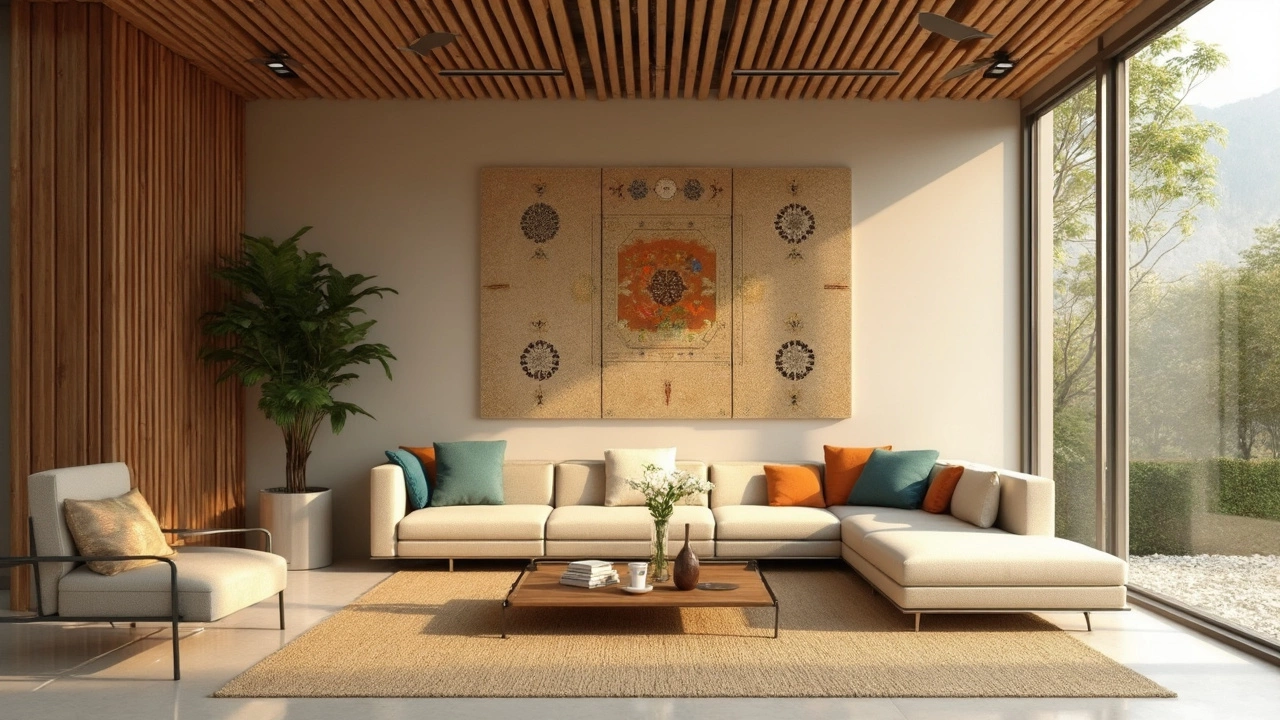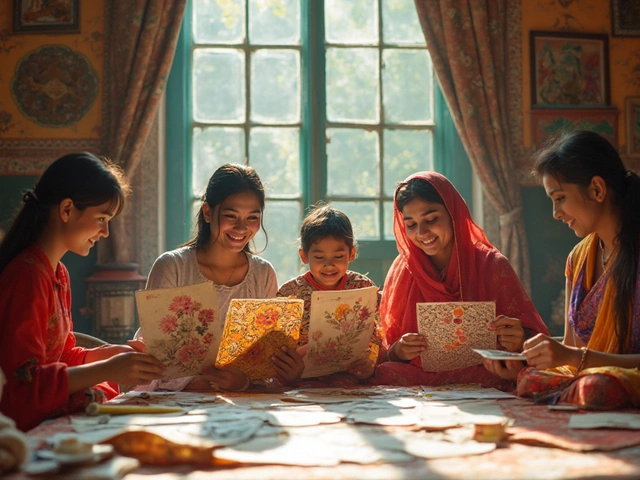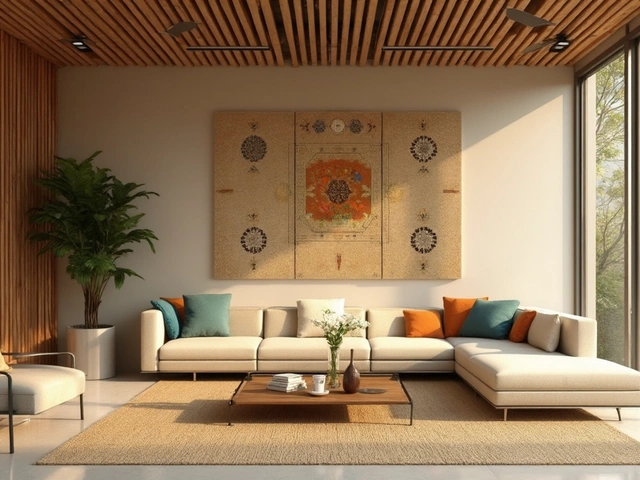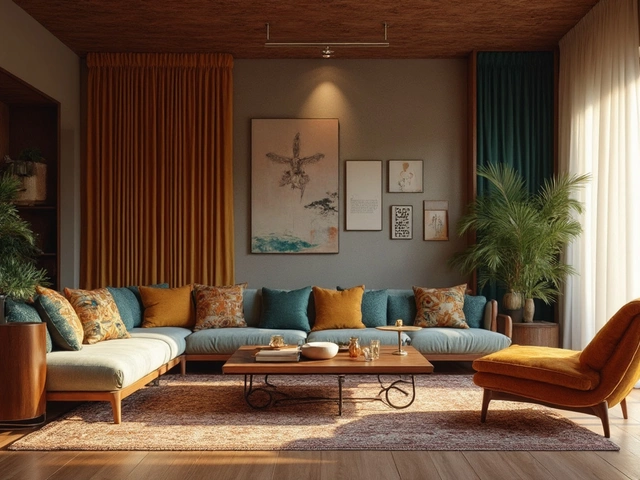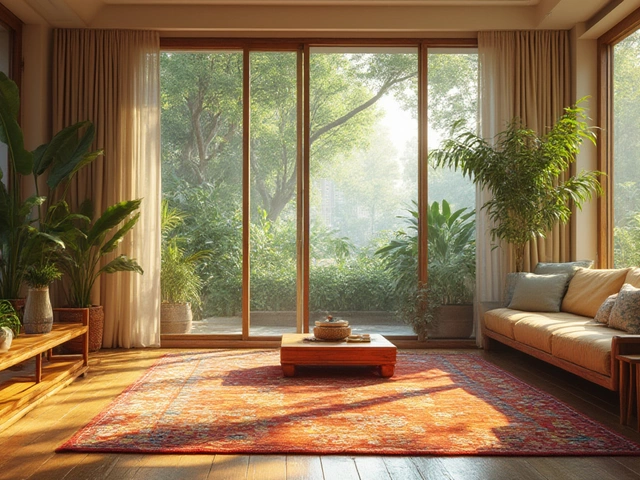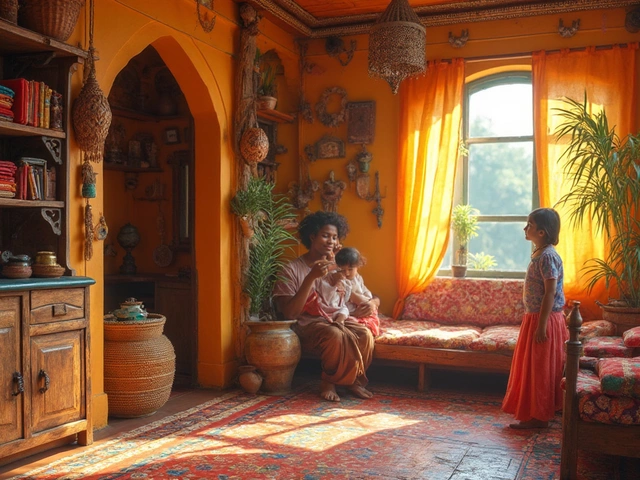When we talk about modern interior design, think less clutter, more function. It’s all about clean lines and simple shapes. This style skips the frills and focuses on space, letting your room breathe. Imagine a sleek kitchen with glossy cabinets and a comfy living room with a couple of statement pieces that really stand out.
Modern interiors love open spaces. You won't find heavy drapes or chunky furniture weighing things down. Instead, you'll see lots of natural light flooding in through big windows. Materials like steel, glass, and concrete take the spotlight, offering a crisp and polished vibe.
Color-wise, it's often a minimalist mix—think whites, blacks, grays, and beiges, but don't be afraid to throw in a splash of color here and there to keep things interesting. Ever notice how a bright red cushion can really pop against a neutral backdrop? That's modern design in action!
- Understanding Modern Interior Design
- Key Elements of Modern Interiors
- Tips for Modernizing Your Home
- Sustainability in Modern Design
Understanding Modern Interior Design
Modern interior design emerged from the modern art movement at the turn of the 20th century. It's influenced by the minimalism of the 1920s and Bauhaus design principles. Wondering what it's all about? Well, it’s driven largely by function and simplicity.
At its core, modern design doesn't just embrace simplicity; it celebrates it. You'll often find strong and clean lines, with an absence of unnecessary detailing. It's like having a wardrobe packed with your classic, timeless outfits, each piece purposeful and stylish, fitting seamlessly together.
"Good design is a Renaissance attitude that combines technology, cognitive science, human need, and beauty to produce something." – Paola Antonelli, Senior Curator of Architecture and Design at MoMA
Characteristics of Modern Style
- Neutral color palette: Whites, beiges, and grays with bold accents.
- Open spaces: Encourages flow and movement.
- Functional furniture: Pieces are both beautiful and practical.
- Natural materials: Wood, leather, and metals play a big role.
- Simplicity in decoration: Less is more when it comes to decor.
But it’s not just about aesthetics. Did you know that about 75% of Gen Zers prefer a home with energy-efficient features? Modern design often incorporates these principles. So, when you walk into a modern home, expect to see eco-friendly materials and smart home technology seamlessly integrated.
Key Elements of Modern Interiors
When we dive into the realm of modern interior design, several elements stand out as its backbone. Here’s what you need to know to keep your spaces grounded in modern style.
Neutral Color Palette
A neutral color palette is a cornerstone of modern interiors, typically involving shades of white, black, grey, and beige. It's the canvass that lets furniture and art pieces pop. Want to add some oomph? Integrate bursts of bold colors like red or cobalt through cushions, rugs, or artwork.
Focus on Functionality
Function over form is the name of the game here. Every piece should serve a purpose, making your home not just stylish but also practical. Think about multi-functional furniture, such as a sofa bed or a coffee table with storage compartments.
Materials and Textures
Modern design leans heavily on materials like metal, glass, and concrete. These materials bring a polished look and offer the durability you’ll appreciate. But don’t forget about textures. Mix in natural materials like wood or a soft rug to add warmth and contrast.
Open Spaces
Open-plan living is almost synonymous with modern design. This involves larger, multi-use spaces as opposed to being boxed into separate rooms. It encourages air circulation and promotes natural light, giving your home a fresh, airy feel.
- Avoid overloading with furniture.
- Favor built-in storage to keep things tidy.
- Choose a layout that allows for fluid movement.
Minimal Ornamentation
Forget heavy drapes and ornate wallpapers. Modern interiors favor simplicity, which often means plain walls with limited decorative elements. A single large art piece can make a statement, capturing attention without cluttering space.
| Material | Characteristics |
|---|---|
| Steel | Durable, sleek |
| Glass | Transparent, light-enhancing |
| Concrete | Strong, industrial look |
Understanding these key elements can help you in incorporating the modern interior design style into your home effortlessly. Keep it simple, functional, and clutter-free, and your spaces will resonate with modern charm in no time.
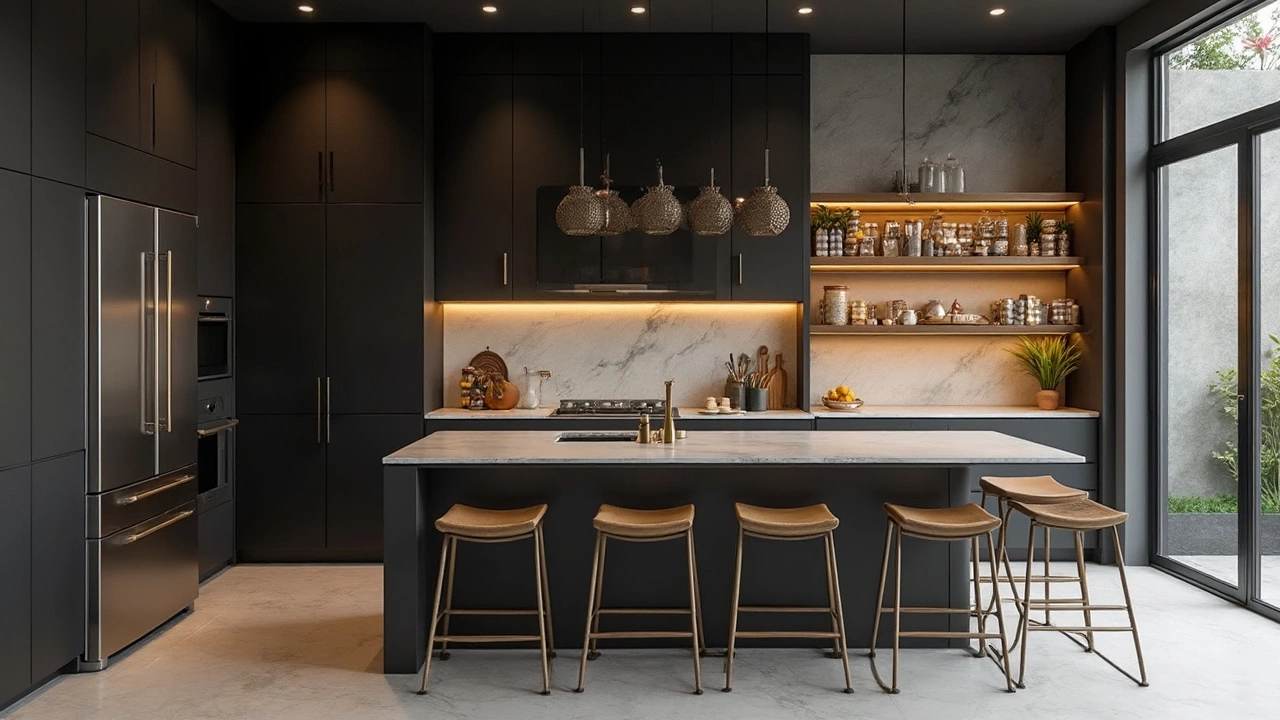
Tips for Modernizing Your Home
Looking to give your home that sleek, modern interior design upgrade? It's easier than you might think. Let's break it down into a few simple steps to get you started on this exciting transformation journey.
1. Go for Open Spaces
First things first, embrace open-concept layouts. Knock down unnecessary walls (if possible) and let the rooms flow into each other. Open spaces are a hallmark of modern design.
2. Choose the Right Colors
Stick to a neutral palette—whites, grays, and blacks. Splash some color here and there with accessories like pillows or artwork to add life without clutter.
3. Use Modern Materials
Think steel, glass, and concrete. These elements are not only stylish but durable. A glass table or steel lamp can instantly add a modern touch to any room.
4. Less Is More with Furniture
Simplicity is key. Opt for furniture with clean lines and simple shapes. Avoid overly ornate pieces as they can fight the clean look you're aiming for.
5. Let in the Light
Natural light is your friend in a modern home. Large windows or skylights can make a huge difference. If that’s not an option, use mirrors to reflect light and create a brighter space.
6. Add Some Smart Technology
Incorporating technology always adds a bit of contemporary flair. Smart lighting or a sleek digital thermostat can make a functional and aesthetic impact.
An interesting tidbit—homes that incorporate smart tech often have higher resale values. Check out this data:
| Feature | Resale Value Increase (%) |
|---|---|
| Smart thermostat | 5 |
| Smart lighting | 3 |
7. Personalize with Art
Just because it's modern, doesn't mean it can't be personal. Use art pieces that speak to you—abstract art works great with the modern interior vibe.
Remember, the goal is to create a space that's not only stylish but also practical and comfortable for you. Happy modernizing!
Sustainability in Modern Design
Sustainability isn't just a buzzword; it's a vital part of modern interior design today. It's about making choices that are good for your home's style and the planet. Think recycled materials and energy-efficient solutions all the way.
Material Choices
First off, look at the materials. Using recycled metals or sustainably sourced wood is a big win. Bamboo, for example, is not only fast-growing but also a versatile choice that fits the clean look of modern homes.
Energy Efficiency
Next up, energy efficiency is huge. Installing LED lights can cut down electricity use significantly—up to 75% less energy than incandescent bulbs. Consider smart thermostats to keep your energy use in check without you even having to think about it. Small switches like these add up!
Eco-Friendly Furniture
When it comes to furniture, recyclable or upcycled pieces are on-trend and sustainable. You can even find sofas and chairs filled with materials like wool or feather substitutes rather than synthetic fillings.
Waste Reduction
Thinking about waste? Try a minimalist approach by only keeping items that are truly meaningful or functional. Less is more, and that's not just about aesthetics—it's about creating less waste too.
| Design Aspect | Sustainable Choice |
|---|---|
| Lighting | LED bulbs |
| Furniture | Upcycled materials |
| Heating | Smart thermostats |
Even small changes can make a big impact. By making these choices, you're not only keeping on trend with modern interiors but also helping protect our planet. That's what sustainability is all about!
